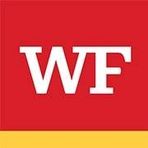Builders See Hope as Mortgage Rates Fall
September 17, 2024, 10:21 pm

Location: United States, California, San Francisco
Employees: 1-10

Location: United States, District of Columbia, Washington
Employees: 501-1000
Founded date: 1942
In the world of homebuilding, confidence is a fragile flower. It blooms and withers with the changing seasons of the economy. Recently, a glimmer of hope has emerged as mortgage rates begin to decline. This shift has brought a breath of fresh air to U.S. homebuilders, who have faced a storm of challenges over the past few months.
The National Association of Home Builders (NAHB) and Wells Fargo released their latest Housing Market Index (HMI) on September 17, 2024. The index ticked up to 41, a modest increase from 39 in August. While this rise signals a slight improvement, it remains below the crucial threshold of 50, where a majority of builders express confidence in market conditions.
For the first time since May, builders are feeling optimistic about future home sales. The decline in mortgage rates has been a significant factor in this newfound positivity. The average 30-year fixed mortgage rate recently dipped to 6.20%, down from nearly 8% last October. This decrease is like a light at the end of a long tunnel, illuminating the path forward for builders and buyers alike.
However, the landscape is not without its thorns. Rising construction costs continue to cast a shadow over the housing market. Builders are grappling with elevated expenses that strain household budgets. This reality tempers the enthusiasm sparked by falling mortgage rates. The cost of materials and labor remains high, making it difficult for builders to fully capitalize on the improving sentiment.
Competition is another beast lurking in the shadows. As existing home inventory rises, builders face increased pressure. Many homeowners are locked into low mortgage rates, reluctant to sell and lose their favorable terms. This lock-in effect limits the supply of existing homes, creating a complex dynamic in the market. Builders must navigate this landscape carefully, balancing their strategies to attract buyers while contending with rising competition.
Despite these challenges, there are signs of improvement. The share of builders cutting prices has decreased for the first time since April, dropping to 32%. The average price reduction also fell below 6% for the first time since July 2022. These metrics suggest that builders are becoming more confident in their pricing strategies, holding off on drastic cuts as they adjust to the changing market.
The sentiment around sales expectations has also shifted positively. Builders' outlook for the next six months rose four points to 53 in September. This optimism is a welcome change, signaling that builders believe the market may be stabilizing. The easing of mortgage rates has provided a cushion, allowing builders to hold their ground on pricing while still appealing to potential buyers.
The Federal Reserve's anticipated rate cuts are another beacon of hope. As the central bank prepares to ease monetary policy, the ripple effects could lower mortgage interest rates further. This potential reduction could alleviate some of the financial burdens on builders, making construction more affordable. Lower interest rates on land development and construction loans could be the key to unlocking new projects and revitalizing the housing market.
The HMI report is based on a monthly survey of NAHB members, primarily regional and local homebuilders. Their insights provide a snapshot of the current market conditions and expectations. While the index remains low compared to the post-pandemic boom, the upward trend is encouraging. In 2021, during the housing surge, the index soared between 75 and 84. The current figures reflect a market in recovery, albeit slowly.
As builders adapt to the evolving landscape, they are employing innovative strategies. Speculative building, where homes are constructed without specific buyers lined up, has gained traction. This approach allows builders to respond quickly to market demands, capturing opportunities as they arise.
Inflation, which has been a persistent concern, appears to be moderating. This shift could further bolster builder confidence. As the economic environment stabilizes, builders may find themselves in a better position to invest in new projects and expand their operations.
In conclusion, the recent uptick in builder confidence is a promising sign for the housing market. Falling mortgage rates have provided a much-needed boost, allowing builders to regain some footing. However, challenges remain. Rising construction costs and increased competition from existing homes continue to pose hurdles. The path forward will require careful navigation and strategic planning. As builders embrace this new chapter, the hope is that the housing market will continue to evolve, ultimately benefiting buyers and builders alike. The journey is far from over, but the seeds of optimism have been sown.
The National Association of Home Builders (NAHB) and Wells Fargo released their latest Housing Market Index (HMI) on September 17, 2024. The index ticked up to 41, a modest increase from 39 in August. While this rise signals a slight improvement, it remains below the crucial threshold of 50, where a majority of builders express confidence in market conditions.
For the first time since May, builders are feeling optimistic about future home sales. The decline in mortgage rates has been a significant factor in this newfound positivity. The average 30-year fixed mortgage rate recently dipped to 6.20%, down from nearly 8% last October. This decrease is like a light at the end of a long tunnel, illuminating the path forward for builders and buyers alike.
However, the landscape is not without its thorns. Rising construction costs continue to cast a shadow over the housing market. Builders are grappling with elevated expenses that strain household budgets. This reality tempers the enthusiasm sparked by falling mortgage rates. The cost of materials and labor remains high, making it difficult for builders to fully capitalize on the improving sentiment.
Competition is another beast lurking in the shadows. As existing home inventory rises, builders face increased pressure. Many homeowners are locked into low mortgage rates, reluctant to sell and lose their favorable terms. This lock-in effect limits the supply of existing homes, creating a complex dynamic in the market. Builders must navigate this landscape carefully, balancing their strategies to attract buyers while contending with rising competition.
Despite these challenges, there are signs of improvement. The share of builders cutting prices has decreased for the first time since April, dropping to 32%. The average price reduction also fell below 6% for the first time since July 2022. These metrics suggest that builders are becoming more confident in their pricing strategies, holding off on drastic cuts as they adjust to the changing market.
The sentiment around sales expectations has also shifted positively. Builders' outlook for the next six months rose four points to 53 in September. This optimism is a welcome change, signaling that builders believe the market may be stabilizing. The easing of mortgage rates has provided a cushion, allowing builders to hold their ground on pricing while still appealing to potential buyers.
The Federal Reserve's anticipated rate cuts are another beacon of hope. As the central bank prepares to ease monetary policy, the ripple effects could lower mortgage interest rates further. This potential reduction could alleviate some of the financial burdens on builders, making construction more affordable. Lower interest rates on land development and construction loans could be the key to unlocking new projects and revitalizing the housing market.
The HMI report is based on a monthly survey of NAHB members, primarily regional and local homebuilders. Their insights provide a snapshot of the current market conditions and expectations. While the index remains low compared to the post-pandemic boom, the upward trend is encouraging. In 2021, during the housing surge, the index soared between 75 and 84. The current figures reflect a market in recovery, albeit slowly.
As builders adapt to the evolving landscape, they are employing innovative strategies. Speculative building, where homes are constructed without specific buyers lined up, has gained traction. This approach allows builders to respond quickly to market demands, capturing opportunities as they arise.
Inflation, which has been a persistent concern, appears to be moderating. This shift could further bolster builder confidence. As the economic environment stabilizes, builders may find themselves in a better position to invest in new projects and expand their operations.
In conclusion, the recent uptick in builder confidence is a promising sign for the housing market. Falling mortgage rates have provided a much-needed boost, allowing builders to regain some footing. However, challenges remain. Rising construction costs and increased competition from existing homes continue to pose hurdles. The path forward will require careful navigation and strategic planning. As builders embrace this new chapter, the hope is that the housing market will continue to evolve, ultimately benefiting buyers and builders alike. The journey is far from over, but the seeds of optimism have been sown.